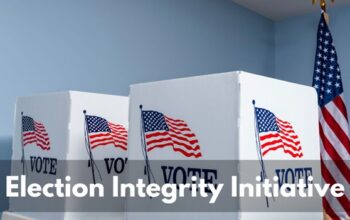State Government Project: 20% of Students Must be Illegal Aliens to Get $7,000 “Bonus”
What to see the most corrupt government program of our time? In this program, the students get 50% of the money—and those administering it get the other 50%. Not bad enough? Under this program 20% of the students must be illegal aliens—people who have broken the law. While the program is about helping the community, it is really about helping bureaucrats and criminals from other countries.
“But all that extra money may create a headache for some volunteers. The $7,000 volunteers work toward counts as income, which may “impact a student’s financial aid,” reads a program FAQ. Campuses are urged to work with their financial aid offices to “mitigate any impact” for students. Also, the $7,000 is taxable income, meaning taxes will be deducted each paycheck.
Every aspect of the program is corrupt.
California will reward volunteering college students with aid — but spend half the money on overhead

BY MIKHAIL ZINSHTEYN, CalMatters, 2/7/22
IN SUMMARY
A new California volunteer financial aid program for college students is using less than half of its budgeted money on actual student aid. Should this money support an expensive volunteer program or go to students directly?
A new California program to financially reward college students for volunteering has drawn national attention — but less than half of its budgeted money is going to actual student aid.
The California Volunteers College Corps program, backed by $159 million in mostly state money, promises to award up to $10,000 to 6,668 low-income students who volunteer in K-12 education, on climate action or to reduce food insecurity.
That only works out to $66.7 million for students, though. So where is the other $92 million going?
Mostly it’s going to hiring and administrative costs despite no guarantee the program will continue past 2024. Some experts think that money split makes sense because students could benefit from training and there’s a chance the program would get additional funding in the future. Other experts think the money should go directly to students, so fewer of them will have to work on top of their other responsibilities.
“I think this is a classic question of is it better to give a person a fish or teach them how to fish,” said Nora Silver, a professor who studies nonprofits at UC Berkeley’s business school and herself led a volunteer program.
To her, the program does both: It gives students money directly and includes a lot of programming to train students and connect what they learned as volunteers to the job market.
Nor does she find the total costs of the program out of whack. The budget details to build out the network of colleges and nonprofits — including career, academic and financial aid advising for student volunteers — are “necessary to offer a well-functioning program,” said Silver.
The flipside of that argument is to just give out the fish — or cash — directly to students. That’s what Robert Shireman would have preferred. He’s a higher-education director at the nonprofit Century Foundation and had a senior position overseeing higher-education policy in the Obama administration.
“I would have plowed the money directly into financial aid based on need and not a new temporary service program,” said Shireman, who noted that many low-income students already work to afford college.
The program is set to last two years, though Gov. Gavin Newsom suggested at a Jan. 18 press event that he’d ask the Legislature to expand the program “if this thing works.” Part of the money will go toward an external evaluation of the program.
Silver thinks the goal is expansion. The program reminds her of the early days of AmeriCorps, the federal volunteer service created in the 1990s. “I don’t think anybody’s going into this saying this is a two-year program,” she said.
Where does the majority of the money go?
Almost all of that $92 million that’s not going directly to students is meant for program costs, according to a budget CalMatters received from California Volunteers, the state office running the program. Forty-five colleges and universities — nearly all public — will share the money.
Of that, $77 million is for a whole array of operations work to build up the volunteer program. That includes money for the colleges whose students will be in this program to develop their local programs and partner with the nonprofits where students will work. Costs include:
- hiring consultants and staff, acquiring extra office space and IT equipment;
- recruiting the actual student volunteers and funding the nonprofits where they’ll do their volunteer work;
- providing students career and academic advice plus training events;
- and an external evaluator, who’ll be hired at a later date, to assess the volunteer program.
Bottom of Form
Another $15 million is reserved for California Volunteers personnel.
Not only is the program a way for students to give back to their community but it’s also an opportunity that allows students to be “learning about a career and also earning while learning that career,” said California Community Colleges Chancellor Eloy Ortiz Oakley.
But a state program for connecting students to careers already exists. Last year’s state budget injected $200 million into a new work-study program for college students, with $300 million more planned for this year.
How will students get money – and when?
Student participants will begin volunteering through the program fall of 2022. Upon completing 450 hours during the academic year, each will get $10,000.
The money is split up into two buckets — $7,000 paid out regularly and a final lump sum of $3,000 after a year of service. As students fulfill their hours, they’ll be paid as if they’re campus employees through their college or university’s payroll system. Even if students don’t volunteer the full 450 hours, they’ll receive a prorated amount of the initial $7,000. But to receive the final $3,000, students will need to complete the full 450 hours of service.
Unlike the federal AmeriCorps, undocumented students may participate in the California volunteer program. State officials want 20% of the volunteers to be undocumented students who receive state financial aid. They’re eligible for the same $10,000 available to other students, but their pot will come from state dollars only, while federal funds will cover a portion of $3,000 other students will be awarded.
State officials want 20% of the volunteers to be undocumented students who receive state financial aid. Their pot will come from state dollars only.
But all that extra money may create a headache for some volunteers. The $7,000 volunteers work toward counts as income, which may “impact a student’s financial aid,” reads a program FAQ. Campuses are urged to work with their financial aid offices to “mitigate any impact” for students. Also, the $7,000 is taxable income, meaning taxes will be deducted each paycheck.
Only full-time students will be eligible for the service program.



